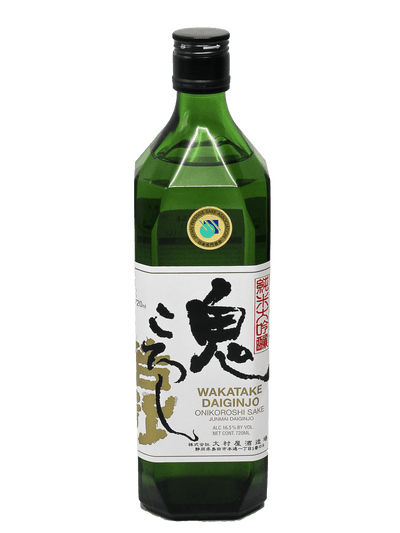What are Tannins in Wine?

Pucker up! Tannins (sometimes referred to as tannic acid) are water-soluble polyphenols present in many plant foods, including grape skins, seeds, and stems. They are astringent, as in very strong tea, and can be bitter. In solution, like in wine, tannins bind to and may precipitate proteins and other organic compounds including amino acids and alkaloids.
White wine is generally low in tannins while red wine (and orange wines) has plenty because of extended contact of the must (the juice being converted to wine) with the grape skins and seed (and sometimes stems) during winemaking. Tannins change as grapes mature and also as wine is made and then ages. Astringency in grapes peaks at veraison, which is when ripening begins.
Are Tannins Important?
A wine’s tannin makeup is critically important to its taste, color, mouthfeel, and ageing potential; it also provides clues about a wine’s origins in terms of terroir and the grape variety or varieties used to make the wine.
It’s the tannins in red wine that cause many novice wine drinkers to opt for white wines or sweeter wines when they order wine. Tannins in wine are sensed in the mouth in different ways and places (gums, lips, tongue, etc.). Tannins soften with age. They can be described as velvety, bold, soft, fine grained, green, ripe, coarse, abundant, silky, sandy, polymerized, etc. Tannins are complex and not totally understood. Research is underway. Proanthocyanidins are the natural tannins in grapes. These flavonoids are oligomers or polymers of catechins, which are relatively small and responsible for bitterness in wine, while larger tannins produce the sensation of astringency, or drying, in the mouth.
Tannins can also come from the wooden barrels used in wine ageing, usually oak. These are known as enological tannins. New barrels will impart more tannins to a wine than used barrels. Seasoned barrels may impart very few tannins into wine. Oak tannins are felt as slightly grainy and “hard.” They lack the suppleness of grape tannins, but they will soften with ageing.
Grape varieties known to have high levels of tannins include Cabernet Sauvignon, Tannat (hence the name), Nebbiolo, and possibly Syrah/Shiraz. Those with moderate tannin levels include Merlot, Sangiovese, Grenache, and Cabernet Franc. Tannins in wine are not tasted per se; they are sensed. And it’s not just the quantity that is important to mouthfeel, but also the type or quality of tannins, which affects “their tendency to ‘stick’ to another surface such as the mucous membranes,” says the Oxford Companion to Wine.
Polymeric pigments are formed by tannins during winemaking. These are responsible for the stable red color found in aged wines. Extended maceration, even up to 40 or 60 days but usually less, during wine making will help extract more tannins into a red wine. Another technique to increase tannins (and phenolic and aroma compounds) is Saignée.
Wines with lots of extracted tannins are generally designed by the winemaker for longer cellaring and are more expensive.
Tannins in Wine Tasting
Tannins are important to a wine’s mouthfeel, enjoyment, and ageing potential. When tasting a red wine, it’s important to consider the types and levels of tannins as well as, believe it or not, where they are felt in the mouth, their location. Tannins are most acutely appreciated on the finish of a red wine.
The more and the more rapidly the tannins in red wine bottle dry out your mouth, the higher the tannin level in wine. Master of Wine Nick Jackson has proposed a technique to help wine tasters, including those conducting blind tastings, identify grape variety and terroir. He writes: “The tannins for each different red variety are perceived in different physical place in your mouth. . . . To use the example of Sangiovese wine, the tannins are felt on the gums, rather than on the tongue or in the cheeks.”
This is, in part, because the grape growing climate, that is the region of the wine, affects grape tannins. Cooler regions and years, as well as grapes picked earlier, will yield aggressive tannins—more astringent and less polymerized—at harvest time. Warmer regions and vintages as well as riper grapes (picked later) will have more evolved, softened, and polymerized tannins.
Compare Wine Tannins
Why not order wine online and compare tannins? Compare for example a young Cabernet Sauvignon like the 2021 Katherine Goldschmidt Stonemason Hill Alexander Valley Cabernet Sauvignon to an older one like the 2016 Long Meadow Ranch Napa Valley Cabernet Sauvignon. These are going to be grippy, fine grained tannins, but the difference between 2016 and 2021 will be substantial.
Or compare two different red wines, such as a 2020 Pierre Durdilly Domaine Les Gryphees Beaujolais Cuvée Les Balmes, which will not have high tannin levels, with a 2021 G.D. Vajra Langhe Clare J.C. Nebbiolo, which will have tannins at center stage.
Did you enjoy learning a little bit about wine tannins? Read our other wine articles and leave us a comment!


















Leave a comment